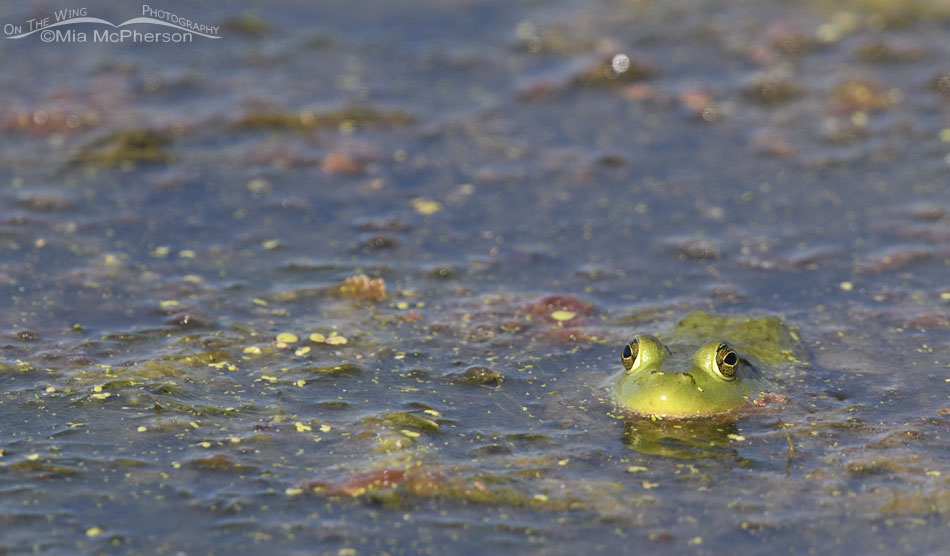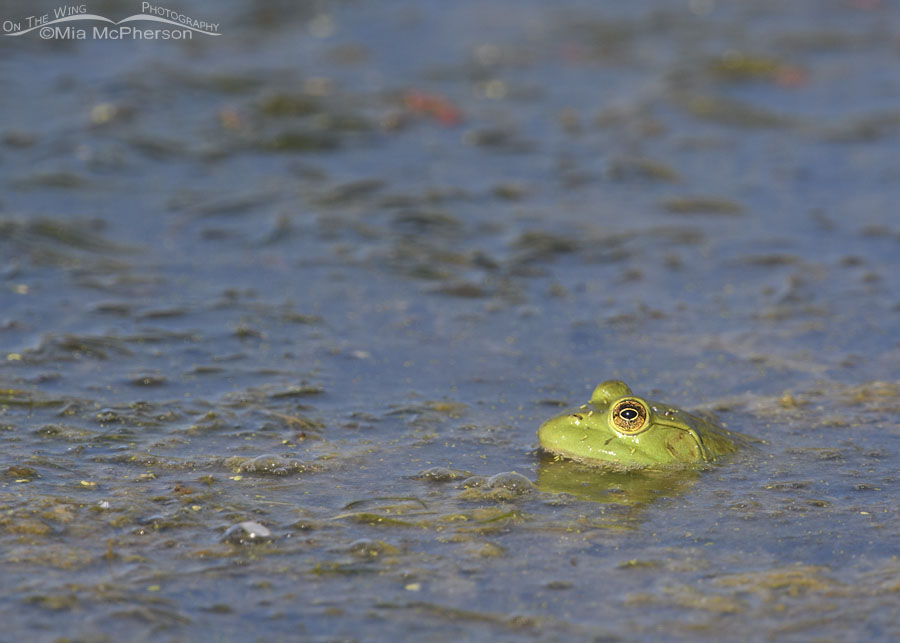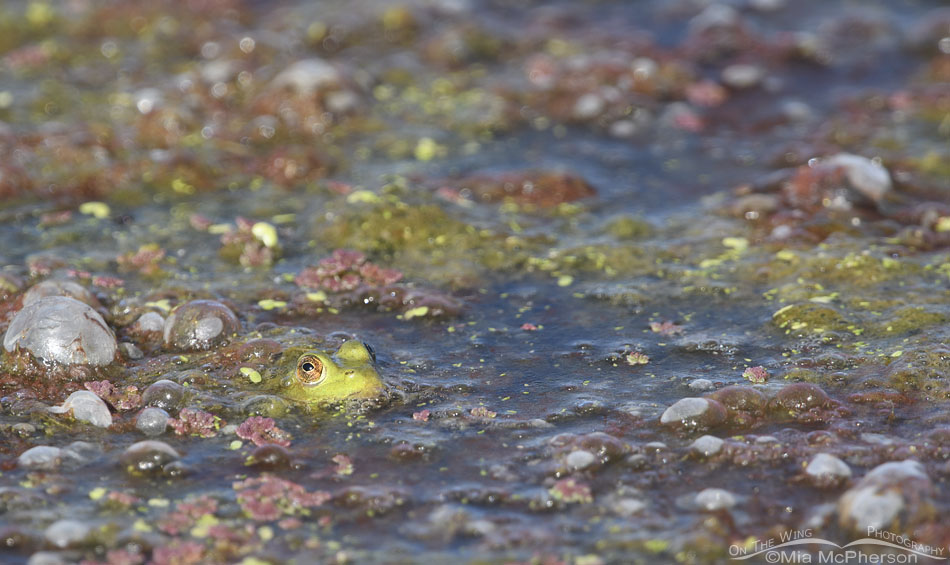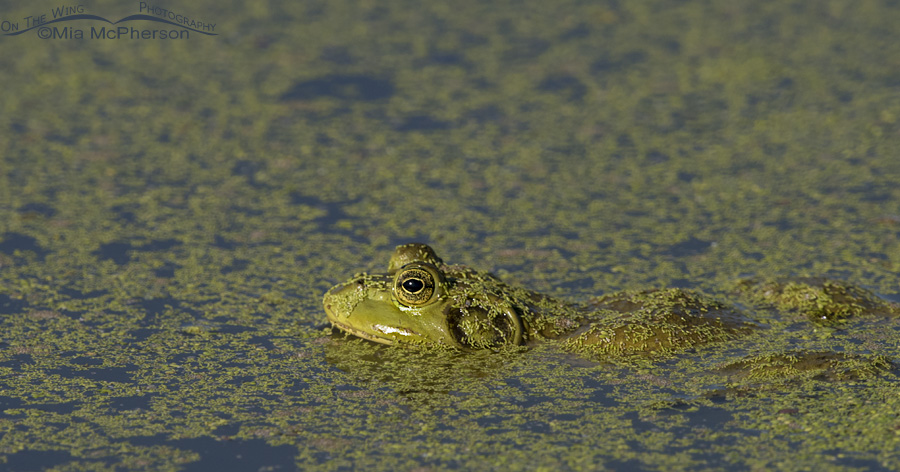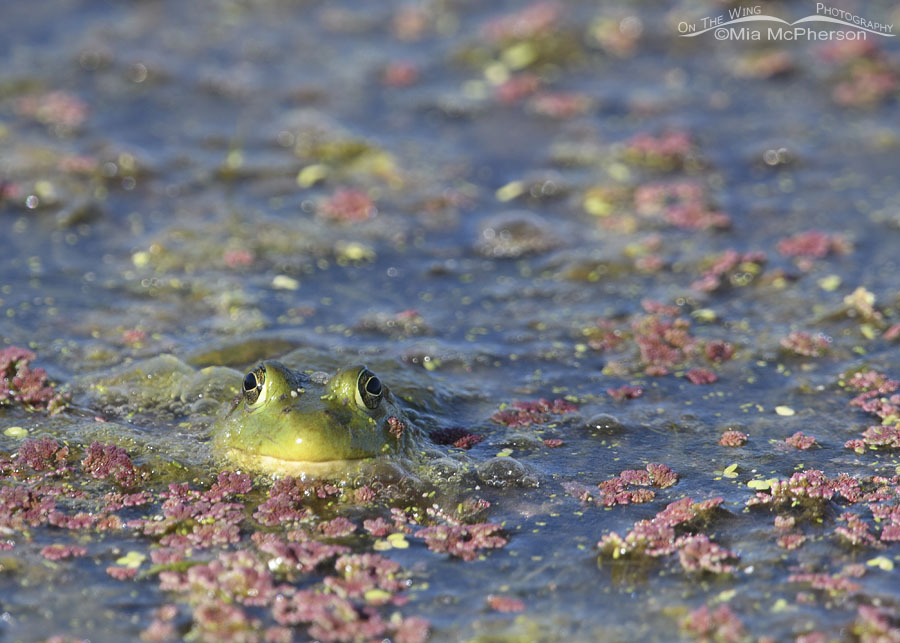
American Bullfrog Images, Facts and Information:
Lithobates catesbeianus
- American Bullfrogs have an olive-green basal color, either plain or with mottling and banding of grayish brown. The ventral (under) surface is off-white blotched with yellow or gray. Often, a marked contrast in color is seen between the green upper lip and the pale lower lip. Their eyes are prominent with brown irises and horizontal, almond-shaped pupils.
- American Bullfrogs are native to eastern North America. Its natural range extends from the Atlantic Coast, north to Newfoundland, to as far west as Oklahoma and Kansas. It is not found on offshore islands near Cape Cod and is largely absent from Florida, Colorado, Nebraska, South Dakota, and Minnesota. It has been introduced into Nantucket island, Arizona, Utah, other parts of Colorado and Nebraska, Nevada, California, Oregon, Washington, and Hawaii. In these states, it is considered to be an invasive species and concern exists that it may outcompete native species of amphibians and upset the ecological balance.
- American Bullfrogs are voracious, opportunistic, ambush predators that prey on any small animal they can overpower and stuff down their throats. Bullfrog stomachs have been found to contain rodents, small lizards and snakes, other frogs and toads, amphibians, crayfish, small birds, scorpions, tarantulas and bats, as well as the many types of invertebrates, such as snails, worms and insects, which are the usual food of ranid frogs.
- The bullfrog breeding season typically lasts two to three months. The embryos develop best at water temperatures between 75 and 86 °F and hatch in three to five days. Time to metamorphosis from tadpole to frog ranges from a few months in the southern part of the range to 3 years in the north, where the colder water slows development.
- Maximum lifespan in the wild for American Bullfrogs is estimated to be 8 to 10 years.
I hope you enjoy viewing my American Bullfrog photos.
Mia McPherson2022-08-24T15:06:53-05:00
American Bullfrog close up
Title: American Bullfrog close up
Location: Farmington Bay WMA, Davis County, Utah
Date: 8/22/2022
Mia McPherson2022-08-24T15:04:06-05:00
Adult American Bullfrog
Title: Adult American Bullfrog
Location: Farmington Bay WMA, Davis County, Utah
Date: 8/22/2022
Mia McPherson2022-08-24T14:54:52-05:00
American Bullfrog and bubbles
Title: American Bullfrog and bubbles
Location: Farmington Bay WMA, Davis County, Utah
Date: 8/22/2022
Mia McPherson2022-08-24T14:51:11-05:00
American Bullfrog and duckweed close up
Title: American Bullfrog and duckweed close up
Location: Farmington Bay WMA, Davis County, Utah
Date: 8/22/2022
Mia McPherson2022-08-24T14:45:58-05:00
An invasive American Bullfrog
Title: An invasive American Bullfrog
Location: Farmington Bay WMA, Davis County, Utah
Date: 9/23/2015


